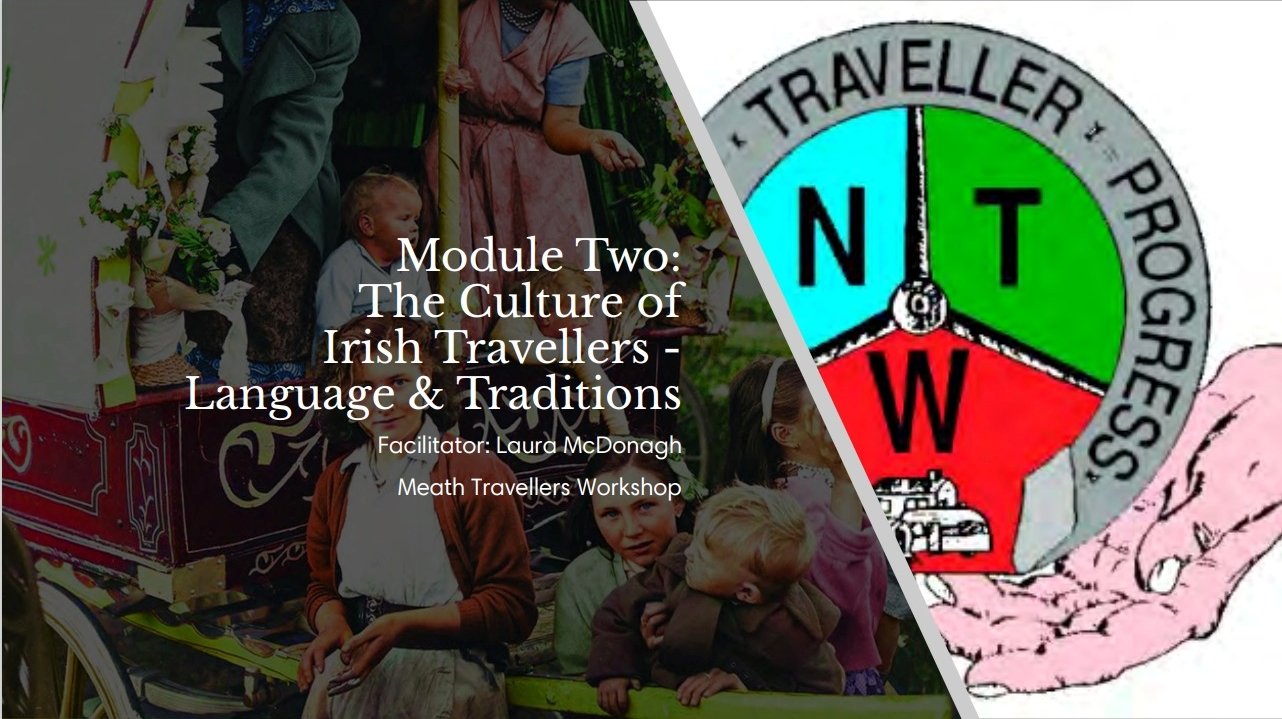
Language & Traditions
Traveller Culture Modules: Language and Traditions - Part Two of Three
Module 2: Traveller Culture: Language and Traditions
Programme Code: TCM2
Duration in Hours: 2
Certification: Meath Travellers Workshop
Special Requirements: Access to a computer and projector for tutor delivering module and printer for worksheets
Overall Aim of the Programme Module: This module aims to give the learners an overall understanding and awareness of the culture of Irish travellers including language, traditions, way of life and social inclusion.
Objectives of the Module:
To recognise and understand the unique culture of the Irish travellers.
To understand the role of tradition within the traveller culture.
To understand the role of family within the traveller culture.
To give an insight into the role and use of the traveller language ‘Cant’.
To encourage learners to embrace the culture of Irish travellers as an inherent part of national culture.
Expected outcomes:
On completion of this module learners will be able to:
Define and describe what Irish Traveller culture involves.
Explain what the Irish Travellers’ language is and understand a few words
Identify and summarise the traditions of Irish travellers
Explain how family life is central to the lives, culture and living conditions of Irish travellers
Describe how traveller culture has impacted other cultures.
Lesson Delivery:
In order to deliver the content of this module this section provides suggestions for programme content but is not intended to be prescriptive. A specific set of teaching and learning resources has been developed to assist in the delivery of this module. These are all clearly outlined and easy to use. They may need to be adjusted depending on the group of learners needs eg: Adults / schoolchildren and on the delivery method eg: In a classroom or via zoom.
The programme module can be delivered through classroom based learning activities, use of powerpoint and worksheets, group discussions, one-to-one tutorials, zoom lesson or other online, field trips, case studies, role play and other suitable activities, as appropriate.
See the attached learning resources for further guidance on this module.
Module Evaluation:
On completion of this module each participant will receive a certificate of completion from MTW.
Each participant will also be asked to fill in an anonymous evaluation form which will be reviewed and necessary changes will be made to the module for future delivery.
Tutors of the module will also be asked to fill in an evaluation form which will also be reviewed, and necessary changes/ adjustments made to the module for future delivery.
Further Study in this area:
This module is a stand alone module from a set of three modules on Traveller Culture.
The next module Part Three of Three is the Trade of the Tinsmith in Theory.
Participants may choose to do one module as a stand alone module or complete two or all three modules. Please contact MTW for more information.
Lucky Horseshoe
The use of a horseshoe as protective and a good luck symbol goes back many centuries so it is good to have it in your home. The iron horseshoe has a long history as a powerful good luck charm in most Western countries.
Meath Travellers Workshop use a Worn Horseshoe Rather Than a New One. It is believed that an actual, worn horseshoe will be infused with powerful energy as it was used to protect the horse over a long period of time. It will also carry a strong energy imprint of the horse - a strong, free-spirited and powerful animal.
Traveller Folklore & Horseshoes
Hang a horseshoe above your door with the two ends pointing down this will ensure that the luck is shared with all who pass under it.
Every bride should be given a horse shoe on their wedding day to ensure a happy union.
A painted horseshow given to a baby when they are eight days old will provide good luck to the child.
A painted horseshoe given to a baby when they are eight days old will provide good luck to the child.








